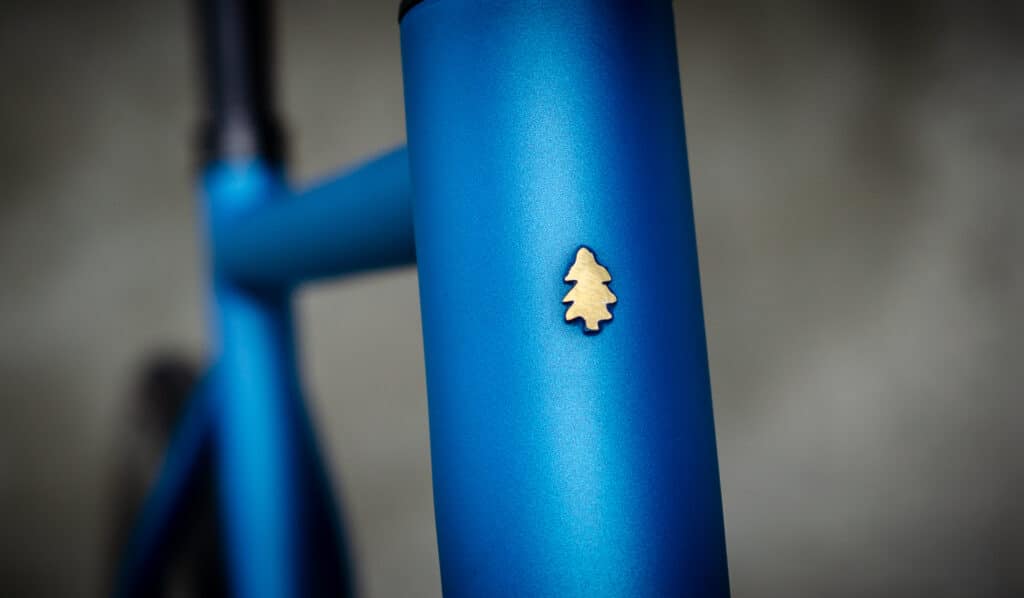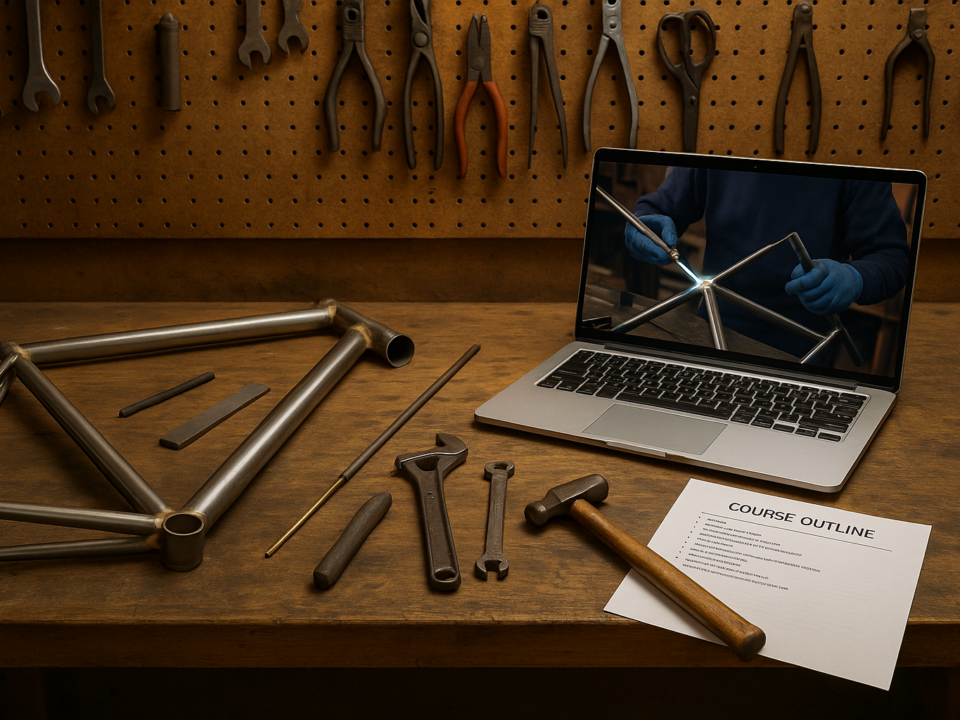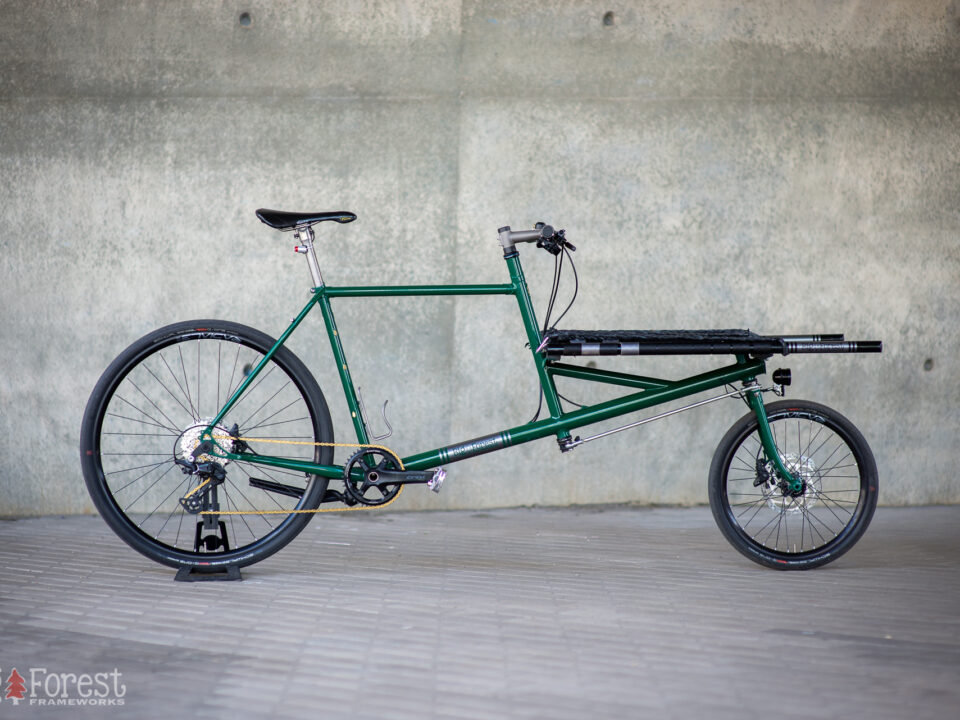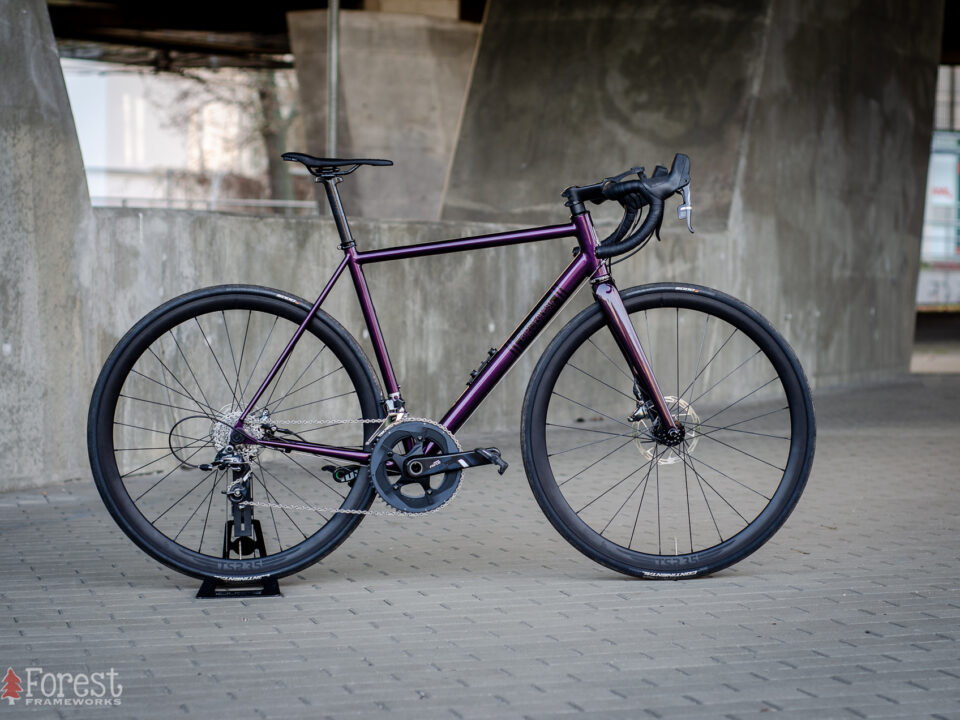
Head Tube Standards for Steel Frames
12. September 2023
Need parts for your new bike?
14. September 2023For our fillet brazed frames without lugs, two bottom bracket (BB) standards are possible at Big Forest Frameworks. A 68mm BB remains the standard of all standards. With a 68mm BSA Shell, you can run any crank you like, you just need a bottom bracket that fits. Generally we recommend BSA. However, there is another ‘new’ standard that has been around for quite a while now, and it is called T47.
T47 could be called the Big Brother of BSA. The shell has a larger diameter than BSA, but like all the other standards the bottom bracket is threaded, and not pressed in. The tool you need to install the bottom bracket in a T47 shell is just a big wrench that fits the bearing cups, and only costs around 30 Euro. Not so with Press-Fit BBs. Since T47 is a threaded standard, it eliminates the creaking noises that you might be used to with your Press-Fit BB. That should be enough to win you over!
Since the shell for the T47 BB is larger in diameter, it is often touted as being stiffer in the press. In principle this is certainly true, however in practice I am skeptical that this really makes a noticeable difference. We haven’t been able to measure a difference to date. One disadvantage of T47 is the weight, the T47 shells weighs a bit more than a BSA shell, however one should also take into account that since the shell diameter is larger, the tubes that intersect the BB need to be correspondingly shorter. So you really need to compare the total frame package, which we also haven’t had a chance to do.
We also wondered about the weights of the bottom brackets that end up being installed in these BB shells. And, we were a bit surprised by the results. The SRAM DUB T47 BB (82g) weights only marginally more than the DUB BSA BB (73g). For comparison we also have a Rideworks T47 BB for the 86mm width and it weighs 127g. Probably this is largely due to Rideworks using an aluminum protection sleeve, whereas SRAM’s is plastic.
 The big advantage of T47, from our perspective, is that there is usually enough room between the bottom bracket and the shell, that your brake line and shift cables can fit through this space. If you want to build a frame with a BSA bottom bracket, and want to internally route cables through the down tube and chain stays, they have to exit the down tube, go around the outside of the BB Shell, and back into the chain stays. With the T47 shell the cables enter the BB shell through a big hole, go between the BB and shell, and back into the chain stays through more holes. The cables are completely hidden from the front to the back, and the frame is easier to build! Even easier to build is a frame for fully integrated cables with SRAM AXS. Fully integrated means that the cables (in this case you only have 2 brake lines) are hidden from the shifters to the exit ports by the brakes. To build a frame for this setup, you only need a large hole in the head tube, and the exit hole by the rear brake, and everything magically disappears!
The big advantage of T47, from our perspective, is that there is usually enough room between the bottom bracket and the shell, that your brake line and shift cables can fit through this space. If you want to build a frame with a BSA bottom bracket, and want to internally route cables through the down tube and chain stays, they have to exit the down tube, go around the outside of the BB Shell, and back into the chain stays. With the T47 shell the cables enter the BB shell through a big hole, go between the BB and shell, and back into the chain stays through more holes. The cables are completely hidden from the front to the back, and the frame is easier to build! Even easier to build is a frame for fully integrated cables with SRAM AXS. Fully integrated means that the cables (in this case you only have 2 brake lines) are hidden from the shifters to the exit ports by the brakes. To build a frame for this setup, you only need a large hole in the head tube, and the exit hole by the rear brake, and everything magically disappears!
Unfortunately there is one disadvantage. It is more difficult to build the complete bike. You have to fiddle the cables though all the tubes. And, with the cables routed through the BB, they make it difficult to thread in the bearing cups as it is hard to screw them in straight. We can solve this problem by drilling a few extra holes in the bottom of the BB shell, so that the cables can be held down with cable ties, so they are out of the way. With a couple of tricks it is pretty easy to get the cables routed through the other tubes. One more point is that not all bottom brackets are the same. Usually they have a plastic cover to shield the crank axle from moisture. This plastic piece sometimes has a larger or smaller diameter, and the smaller it is, the easier it is to install the BB. The diameter here depends somewhat on the crank axle diameter, in principle a 24mm Shimano crank could be easier to install than one with a 30mm axle (SRAM DUB).


 Even so, we have built up a 2×11 mechanical shift road bike with a T47 SRAM DUB BB and it was no problem. Some companies, like Rideworks in the UK, actually specialize in producing their BBs with as small a diameter as possible, to make the installation easier.
Even so, we have built up a 2×11 mechanical shift road bike with a T47 SRAM DUB BB and it was no problem. Some companies, like Rideworks in the UK, actually specialize in producing their BBs with as small a diameter as possible, to make the installation easier.
You should also know that the T47 standard comes in at least two widths, 68mm and 85,5mm. With both widths you should be able to install any crank you like as long as you can find a BB that fits. The difference is that with the 68mm T47 shell the bearings sit externally, and with the 85,5mm width the bearing cups actually sit inside the shell. The 68mm BB width is more common than the 85,5mm width. However, SRAM and Campagnolo offer T47 BBs only in the 85,5mm width. For the frames built in our workshop, we almost always choose the 85,5mm standard. This gives us more flexibility on where we can attach the chain stays. With the 68mm shell, the holes in the shell for the internally routed brake and shift cables would normally get covered by the bearing cups when they are screwed in, and so these need to be located farther inboard than is typical. With the 85,5mm shell we don’t have this problem.
What do we recommend? Well that depends on what is important to you. Certainly you can’t go wrong with the good old BSA BB. But, if you want your bike to have invisible fully integrated cables, with electronic shifting from SRAM or Shimano, T47 is really your only option. If you want to build a frame for a mechanically shifting bike with a front derailleur, I would suggest BSA with the shift cables routed externally, and the brake internally if you prefer. The maintenance is easier. When you need to change out the cable housing, you will probably have to remove the crank. That’s not really a big deal, but it is a price to pay over and over again for the clean look of no cables. That said, our Nozama is a 1x mechanically shifting gravel bike with a T47 BB, and the cables are routed internally. It was pretty easy to build up, but to date we haven’t needed to change them, yet!
Ever think about building your own bike frame? We offer frame building courses!









4 Comments
it woul be very useful to know what is the exact size of the holes for the zip ties in the bottom bracket?
thanks for the great article.
Hi John – We usually drill 5mm holes.
Best,
Robert
From the picture label without zip tie, it look like the cable would easely fit above the bottom bracket if the shell had properly position holes for the down tube and chain stay. That would also avoid the kink in the cable cause by the zip tie. Thanks for your article.
Hi Sylvain – that is an interesting idea. Usually we offset the chain stays to the bottom so that cable doesn’t bend as much. This frame has them centered. Once the bottom bracket is installed you can clip the cable tie and the bend will relax.